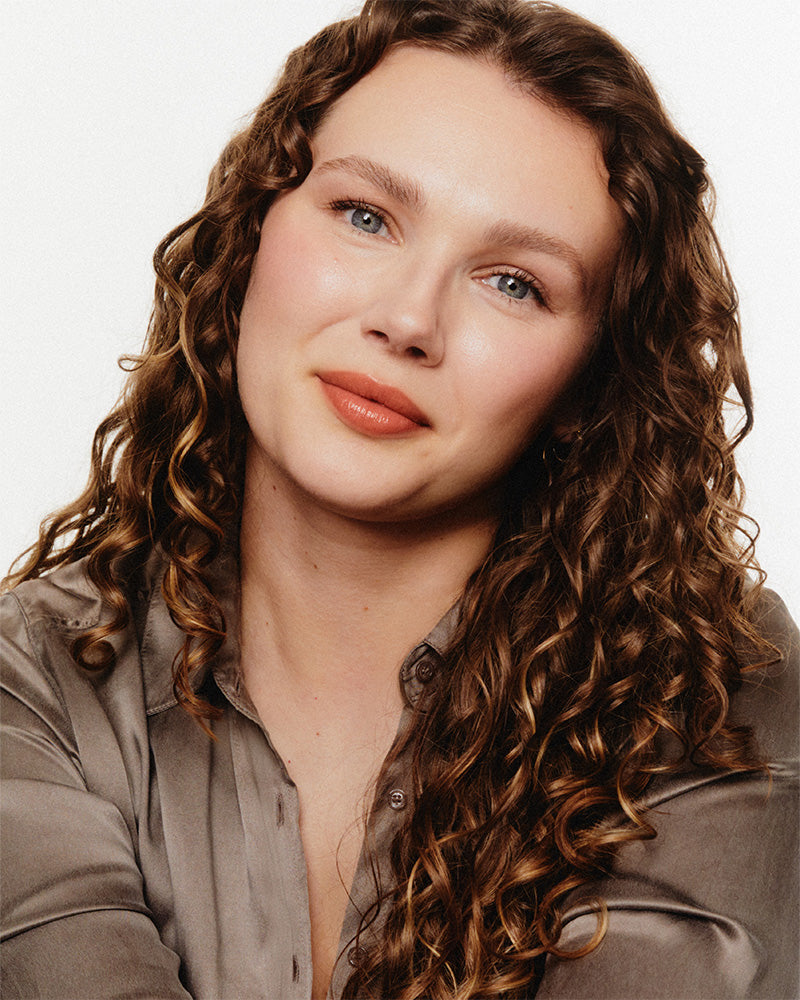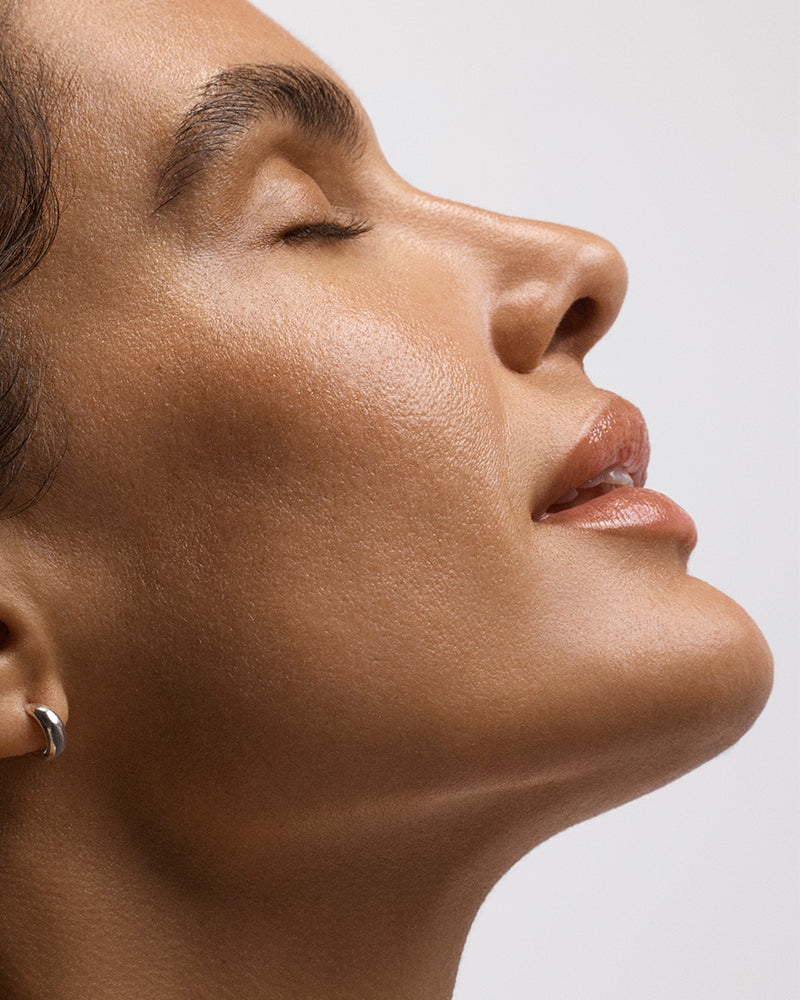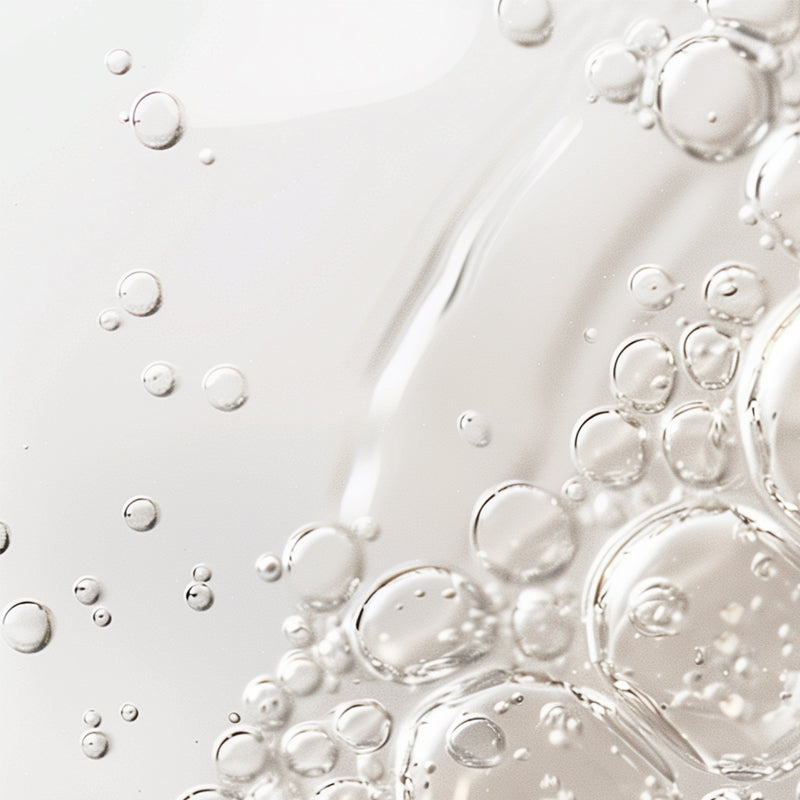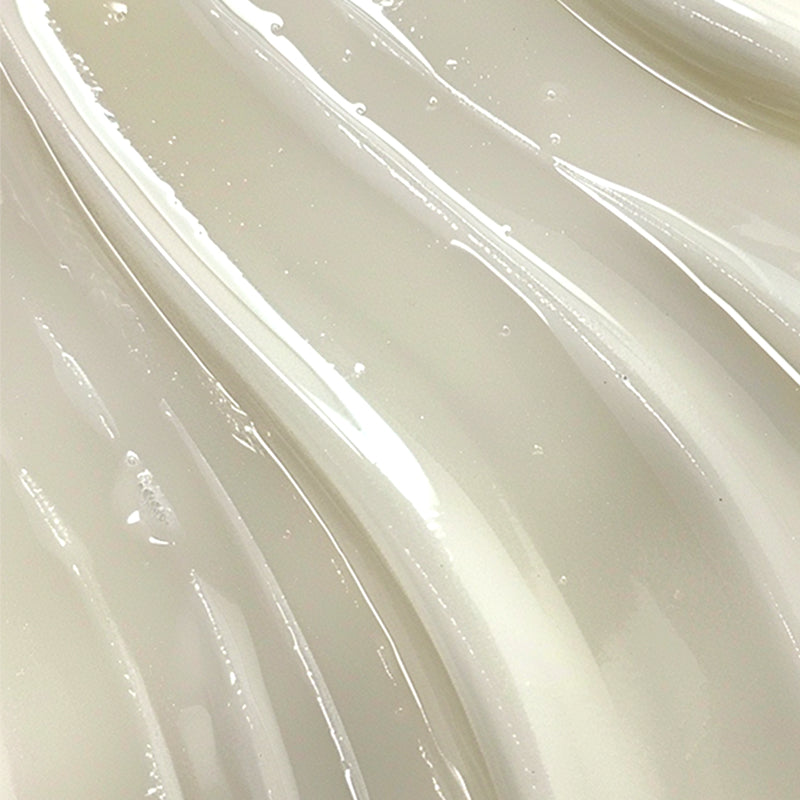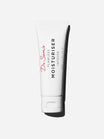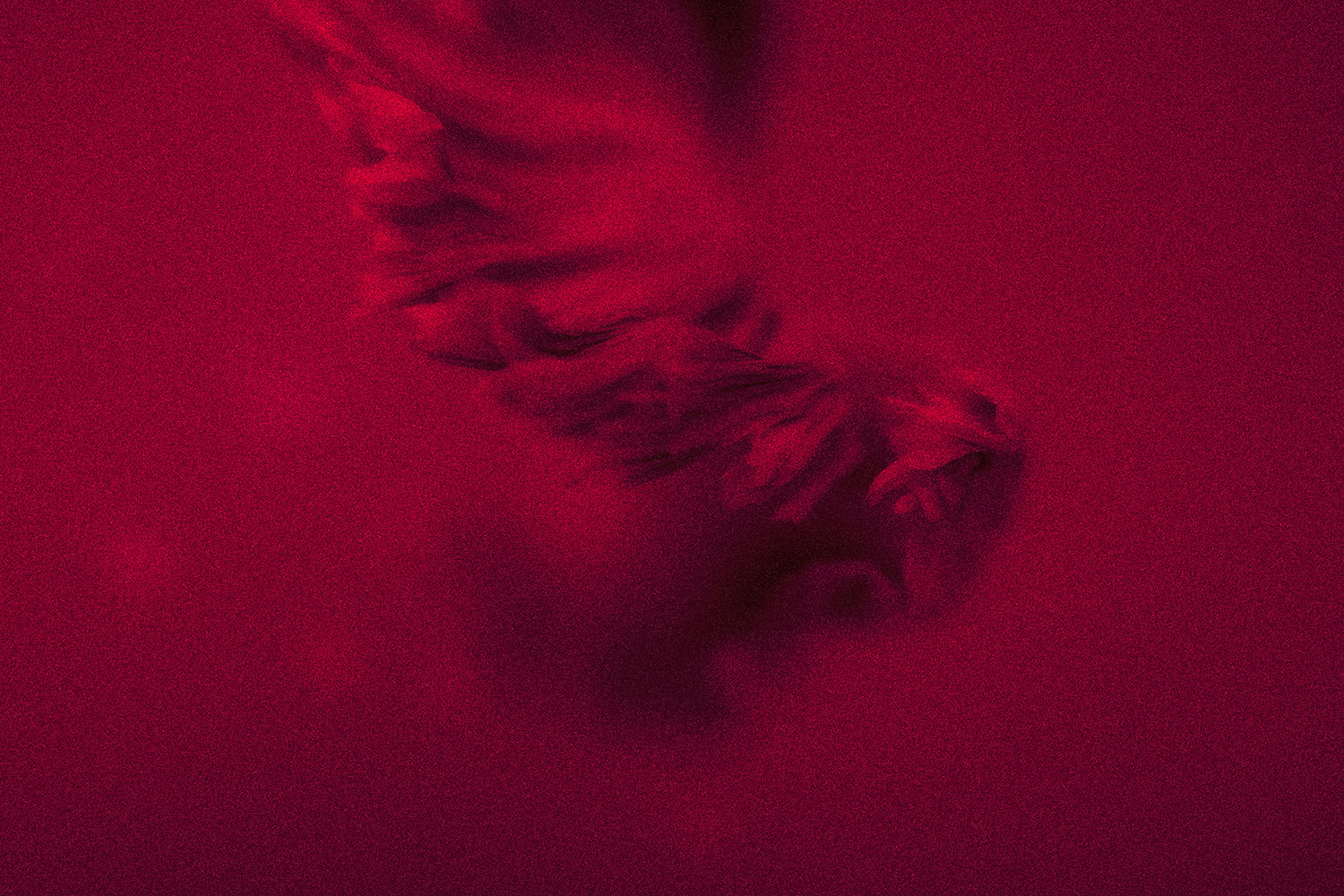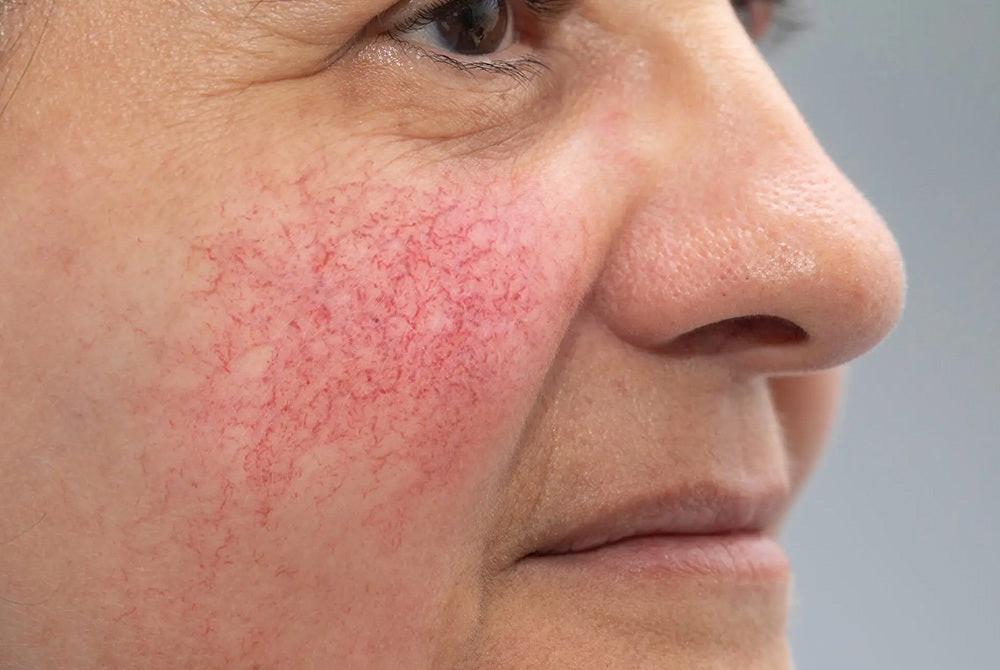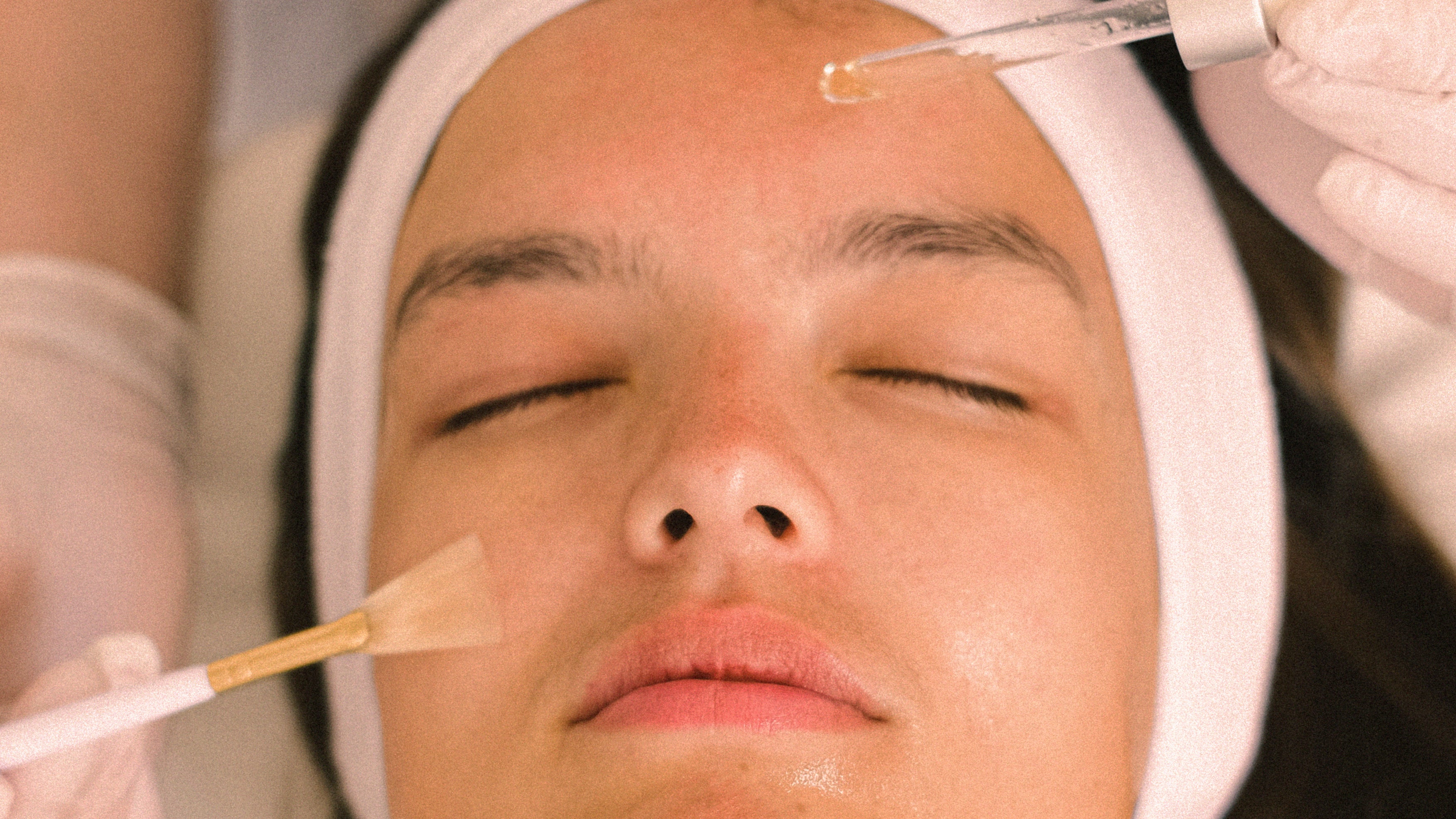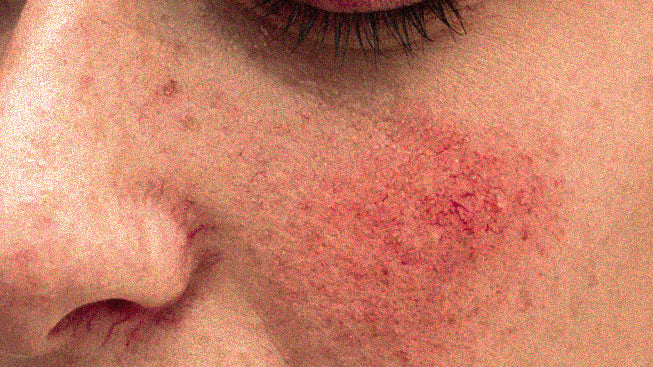What is rosacea? If you’ve ever experienced prolonged blushing, spots in the centre of the face (rather than t-zones) and skin that’s often red and sensitive, these are all signs of rosacea: a skin condition affecting around 10% of us. I wanted to go deep and discuss more about this common skin issue, including how to treat rosacea and what rosacea is caused by. There are lots we can do to reduce progression, and I want you to have all the information you need to take charge of your skin. I’m prone to rosacea myself. My tendency for acne waned in my 30s and I began to notice different skin behaviour. A glass of red wine or spicy foods would make me blush for a long time. My skin stopped tolerating low pH skincare as well as it used to. I started having to be more careful with my choice of sunscreen. If you can relate to some of these, read on for solutions to support.
What is rosacea?
It's a common skin disorder, typically occurring between ages 30-60 and affecting fair-skinned, light-eyed individuals. But it can also affect darker skin tones, where it presents a greater diagnostic challenge.
What does rosacea look like?
There are four key different types of rosacea, all of which look a little different. While seen as distinct subtypes, it’s also common for all of them to overlap. Most individuals with rosacea will experience sensitivity due to an impaired skin barrier. This often leads to a stinging or burning sensation brought on by anything from the cold weather to certain foods and skincare formulas.
Type 1: erythematotelangiectatic rosacea or ETR
Often the first sign of rosacea, characterised by a prolonged flush of the skin. Dilated capillaries or telangiectasia (small red or purple clusters with a ‘spidery’ appearance) are also seen, which cause further skin redness.
Type 2: papulopustular rosacea
The most recognisable form of rosacea. Often confused with acne because of the red spots (papules) and white-headed spots (pustules) that typically appear in the centre of the face over the cheeks, nose and chin.
Type 3: phymatous rosacea
A rare type of rosacea most commonly seen in men, characterised by firm, thickened, red and bumpy areas of skin. This type usually affects the nose area (rhinophyma) and, because of the inflammatory process, may often progress to fibrosis.
Type 4: ocular rosaceaWhat is rosacea caused by?
So many things. First, the elements. Cold weather in winter steals away essential moisture from the skin, which can aggravate the skin barrier. Similarly, excess UV exposure in summer can also disrupt barrier function. It’s fair to say the in-between seasons are the kindest to our skin. What we eat also has an impact. Common irritants include alcohol, especially histamine-releasing red wine, spicy foods and hot, caffeinated beverages may trigger a flush. I advise patients to avoid steaming hot baths, saunas, hot yoga or HIIT training - all of which heat up the skin and increase redness.
Premature ageing & rosacea
It’s really common to fall into the trap of thinking that actives to treat premature ageing aren’t for you when you have rosacea. But it doesn’t have to be the case. And in many ways, they’re much needed in the typical rosacea patient with light skin, who’s very much at risk of premature ageing with fine lines, uneven skin tone and texture, and loss of elasticity. When it comes to my own skin journey, I’ve learnt to anchor my maintenance routine on a few really key ingredients whilst still respecting my skin’s desire to redden unpredictably and a simple, stripped back routine. If in doubt, introduce actives at the right time (when skin isn’t going through a rosacea flare) and the right strength (start low and slowly increase as skin adapts). Scroll for more information on the specific ingredients that can support.
Which ingredients help improve rosacea?
How to treat rosacea with the right skincare toolkit and ingredients.
Mineral sunscreen
Kind-but-mighty zinc oxide and titanium dioxide are the ultimate sunscreen filters when it comes to sensitive skin. They have a light-reflecting quality which can help dial down redness, especially if tinted. I’m a huge fan of using these in my own routine and recommending to patients.
Ivermectin
This prescription cream (also known as Soolantra) has become my go-to for active flare-ups of the papulopustular variety. It’s soothing and has a calming skin feel, delivering effective results. I tend to use it in short bursts. Once the flare-up has settled, I’ll transition to something different for maintenance.
Niacinamide
This widely-available skin-loving vitamin serves two key roles in rosacea. Niacinamide is anti-inflammatory and boosts barrier function to tackle both key issues of this skin condition.
Retinoids
In rosacea that’s coasting along in the maintenance phase, a retinoid can be a really helpful addition. It can support collagen production to build stronger, smoother, healthier skin, as well as reducing abnormal vessel formation. Start slowly. Granactive Retinoid is a great first step, found in Flawless Nightly 2% Retinoid Serum. If your skin reacts well, you can increase to a higher strength like Flawless Nightly Pro 5% Retinoid Serum, with 5% Granactive Retinoid, or try a prescription strength like Differin (or adapalene).

Azelaic acid
This all-round ingredient is brilliant for redness and rosacea-prone skin. It reduces the activity mediated by toll-like receptors, which sense our environment for danger to activate our skin’s defences. In redness-prone skin these sensors are turned up too high, so azelaic acid helps bring them back under control. I find this the most helpful in the long-term maintenance of my rosacea patients.You can find 10% azelaic acid in my Flawless Brightly 10% Azelaic Acid Serum.
How to treat rosacea
I firmly believe that rosacea management is about your daily habits. One of the biggest triggers for a flare is using the wrong skincare - something I imagine every rosacea sufferer knows. But when you get it right, it has a powerful calming effect, reducing flares and their severity. Here are your simple, day to night skincare routines to support rosacea flare-ups.
Morning routine
Calm and protect.
Step 1: Flawless Cleanser
A simple, non-foaming, fragrance-free cleanser is best to clean skin without causing sensitivity.
Step 2: Flawless Moisturiser
Deeply hydrates skin while reducing redness and supporting a strong, healthy skin barrier with niacinamide.
Step 3: Flawless Gossamer Tint SPF 50
An all-mineral sunscreen with excellent UVA protection and a subtle tint to tone down redness.
Evening routine
Regenerate and repair.
Step 1: Flawless Cleanser
Deeply cleanses skin and removes all traces of make-up without stripping moisture or disrupting the skin barrier.
Step 2: Flawless Nightly 2% Retinoid Serum
2% Granactive Retinoid boosts collagen and clears blemishes, while 5% azelaic acid calms redness.
Step 3: Flawless Moisturiser Intense
Hydration without heaviness, this non-clogging formula is clinically proven to repair the skin barrier after first use.
What not to do with rosacea
If you’re looking for more tips on how to treat rosacea - here’s what to avoid in your routine.
- Double cleansing - this can deplete the already compromised skin barrier and cause further irritation.
- Toning of any kind - certain ingredients and actives in toners may irritate already sensitised skin.
- Most face masks - same as above, read the INCI list to be careful of potentially irritating ingredients.
- Physical exfoliants - these will scrub away at skin, leading to more redness and sensitivity.
- Chemical sunscreens - may cause stinging or burning sensations and prolong a rosacea flare-up.
- Facials - they offer little to benefit the rosacea sufferer and are high risk for triggering a flare.
To sum up how to treat rosacea: think calm and consistent skincare, a long-term maintenance strategy, and patience. Better skin days are coming!

